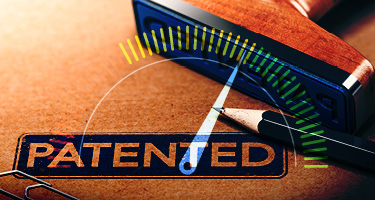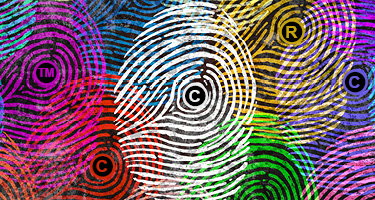If someone has copied or reproduced your book, article, blog, artwork, photograph or other copyright-protected works without your permission, you have several options. Before using any of these options, be sure that you actually own the copyrights to the content that you are reporting. Falsely reporting copyright infringement can be a violation of federal law that can subject you to a claim for damages, including costs and attorney fees.
Request Credit or Removal
Before spending time and resources with removal efforts, you might first set your ego and your sense of justice aside and consider whether you are actually harmed by the infringement of your rights. It may be that you would have happily authorized the use if the infringer had requested permission and that the only harm was you were not given credit.
It is often a good idea to start with a conversation, either verbally or in writing. Many people are ignorant about copyright law and believe that as long as they are not commercializing someone else’s work, they can use it without permission. Sometimes all it takes is a calm and professional notification to educate the infringer coupled with a request for removal or credit.
Directly approaching the infringer may be a good option when you have not registered the copyright in the photograph because without a registration, you cannot recover statutory damages or attorney fees incurred in enforcing your rights. In that case, it may not make financial sense to hire legal counsel unless your direct efforts have failed.
DMCA Notice
If your original work was online and the infringement is online, consider using the Digital Millennium Copyright Act (“DMCA”) take-down procedure. This is especially a good option when the infringer appears to have acted willfully and is not likely to respond to your polite request to remove online infringement or give you credit. The beauty of the DMCA is that you do not need the cooperation of the infringer. A DMCA notice is sent to entities other than the infringer who have control over the infringing content, such as a social media website or internet service provider.
While the DMCA does not provide a remedy other than removal, it also does not foreclose the use of other remedies. So, you can send a DMCA notice and still sue the infringer for damages. You will want to capture dated screen shots of the infringing photos showing the URL before you seek removal of the content since your success will result in loss of access to the evidence.
Social Media Reporting Options
Most social media platforms have their own take down procedures that you can initiate through the platform. For example, Facebook has a “Policies and Reporting” section in its help center where you can find an electronic form to fill in to report copyright infringement if someone posts one of your photographs without your permission. On YouTube, click on the three dots under the video and choose “report.” From there, you can choose the option that the video infringes your rights. Instagram also has an option to report a post directly from the three dots just above the post.
Formal Cease and Desist Letter
In situations where the infringement is causing harm, you may consider hiring legal counsel to send a formal letter seeking removal, damages, royalties and/or reimbursement of your attorney fees. An appropriate situation for a cease-and-desist letter would include an apparently willful infringement of your content in a manner that is either causing you harm or is earning the infringer money. Whether the infringed content is covered by a copyright registration is also a significant consideration because you cannot recover statutory damages or attorney fees if the copyright was not registered before the infringement occurred.
File a CASE Act Claim
Effective December 27, 2021 Congress established a new administrative court within the U.S. Copyright Office for small copyright infringement claims. The person you are accusing of infringement can opt out of the process though by filing an opt out notice within the 60 days. If that happens, you still have the court option discussed below. If the infringer doesn’t opt-out and the CCB proceeding goes forward, it’s designed to move along much more quickly than a court case. All appearances are always virtual via internet-based applications such as Zoom, Microsoft Teams, or similar programs.
The total damages for a CASE Act claim are capped at $30,000 in either actual damages or specific amounts set by the statute. Attorneys’ fees and costs of up to $5,000 can also be recovered but only in cases where the opposing party has demonstrated “bad faith conduct,” defined as pursuing “a claim, counterclaim, or defense for a harassing or other improper purpose, or without a reasonable basis in law or fact.”
File a Court Case
The most aggressive approach to copyright infringement is to file a lawsuit. In most cases, this is a step that the aggrieved party takes after other enforcement options haven’t worked. Copyright cases must be filed in federal court as state courts do not have jurisdiction to hear them.
Lawsuits require a substantial commitment of time and resources and you should confer with a lawyer before making that decision. It also makes sense to have a lawyer represent you in the case. If the infringed work is owned by an entity (a limited liability company or a corporation) legal counsel is required. You are not allowed to represent your company in court. And while you are allowed to represent yourself, the process is complicated and federal judges have limited patience for pro se litigants who do not know the rules. Most importantly, you do not know what you do not know and those who represent themselves in court almost always fail to take advantage of available claims or defenses, costing themselves money.
Because litigation is expensive, almost all cases settle before they go to trial. If you registered your copyright before the infringement and gathered strong evidence, the infringing party is highly likely to settle rather than incurring the costs of litigation and the risk of an adverse judgment.
This article is an excerpt from the book, Protect Your Photographs: A Legal Guide for Photographers, by Maria Crimi Speth, Esq., available on Amazon. Ms. Speth is an intellectual property attorney and chair of the IP group at the Phoenix law firm of Jaburg Wilk. She has expertise in copyright law, trademark law, and Internet law. She focuses on litigation involving intellectual property rights, privacy and First Amendment rights. Ms. Speth is also the author of the book, Protect Your Writings: A Legal Guide for Authors.




























